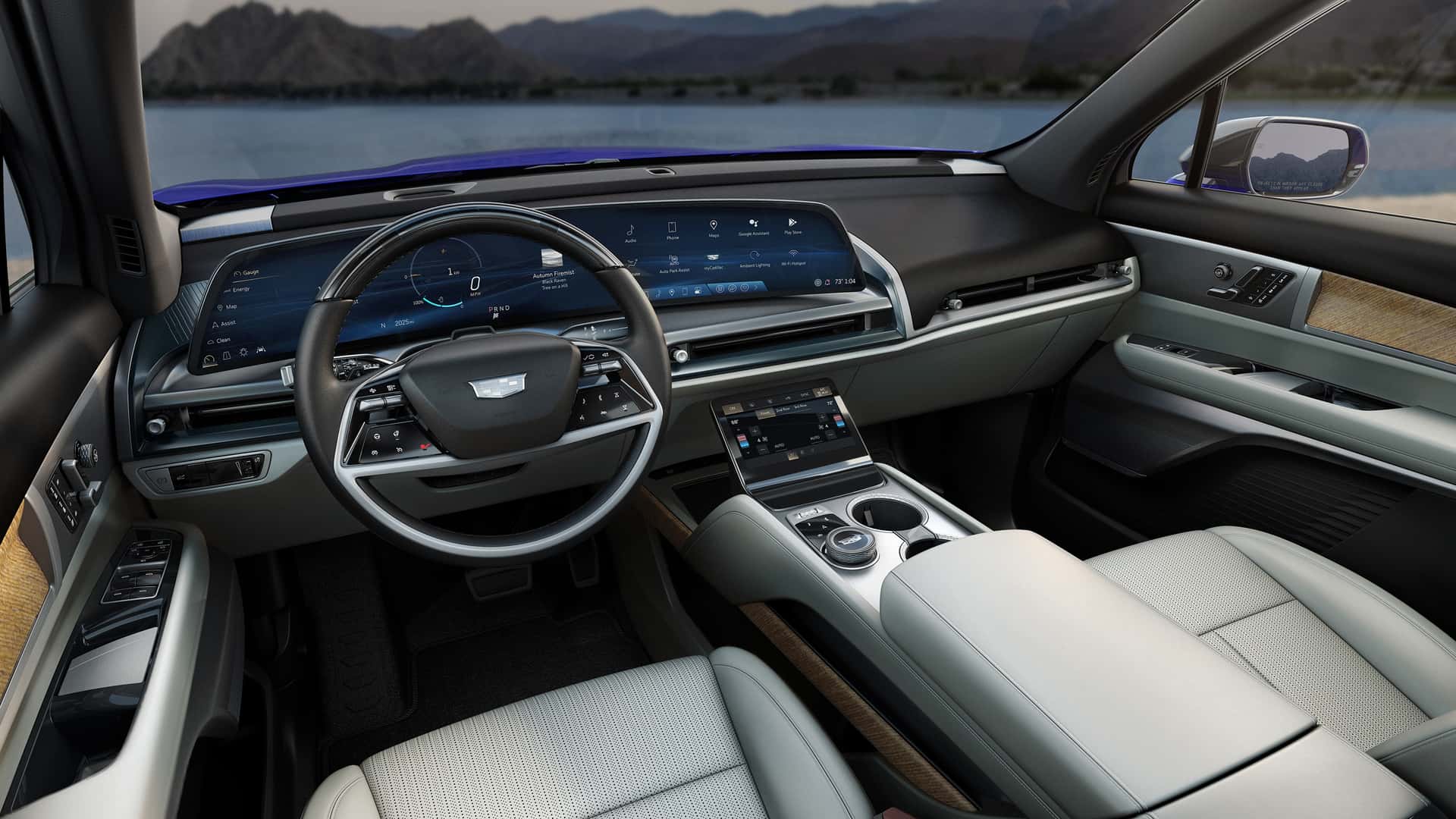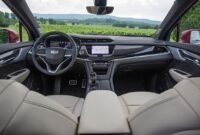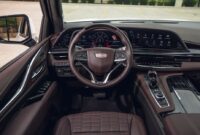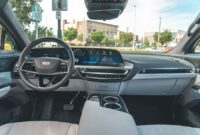Cadillac’s Electric Renaissance: How GM’s Luxury Powerhouse is Capturing the Hearts (and Wallets) of Tesla Owners
In the dynamic and fiercely competitive landscape of the electric vehicle (EV) market, a compelling narrative is unfolding, challenging preconceived notions and reshaping the future of luxury motoring. Cadillac, General Motors’ venerable luxury brand, is not just participating in the EV revolution; it’s aggressively leading a significant charge, demonstrating a remarkable resurgence that is turning heads and, more notably, drawing in a surprising demographic: current and former Tesla owners.
This isn’t merely a fleeting trend. Cadillac is coming off its strongest financial quarter since 2008, a testament to a strategic pivot that is clearly paying dividends. Retail sales surged an impressive 21% in the first three months of the year, driven overwhelmingly by the rapid adoption of its new electric offerings. What makes this success even more intriguing is the demographic breakdown: nearly 80% of Cadillac EV buyers are entirely new to the brand, signaling a powerful “conquest” strategy at play. And within this wave of new clientele, a significant portion comprises individuals who once championed, or currently drive, vehicles from the undisputed EV pioneer, Tesla. This shift underscores a fundamental evolution in consumer preferences within the luxury EV segment, hinting at a market maturing beyond initial novelty to embrace sophisticated alternatives.
The Unmistakable Allure: Why Cadillac’s EVs Are Winning Over Tesla Drivers
Cadillac’s ability to attract former Tesla drivers is arguably one of the most compelling stories in the current automotive landscape. For years, Tesla enjoyed a near-monopoly on the luxury EV market, appealing to early adopters with its innovative technology, impressive performance, and distinct brand identity. However, as the EV market matures, so do consumer expectations. Buyers are no longer solely driven by range or acceleration; they are increasingly seeking a holistic luxury experience, one that encompasses traditional comforts, refined aesthetics, superior build quality, and an established dealer network. This is precisely where Cadillac, with its rich heritage of American luxury, is making its move.
Brad Granz, Cadillac’s global marketing director, succinctly articulated this phenomenon during a recent showcase of the three-row Vistiq. He revealed that the brand is seeing “the opportunity to increase the conquest rate for Tesla, absolutely.” The numbers speak volumes: approximately 25% of Cadillac Lyriq buyers are former Tesla drivers. This figure marks a substantial increase from previous periods, where that percentage hovered between 10-15%. This acceleration in cross-brand migration suggests that a critical mass of EV owners, particularly those who were early adopters of Tesla, are now actively exploring—and embracing—alternatives that offer a different interpretation of luxury in the electric age.
Several factors could be contributing to this notable shift:
- Maturing Luxury Expectations: While Tesla initially captivated with its minimalist approach and cutting-edge software, some luxury buyers may now be craving the tactile sophistication, plush interiors, and serene cabin experiences that traditional luxury marques like Cadillac are renowned for. The perceived “luxury” of a Tesla might feel less exclusive or refined to some as the brand’s volume grows.
- Brand Heritage and Perception of Quality: Cadillac carries a legacy of craftsmanship and comfort. For buyers seeking a blend of futuristic powertrain technology with established notions of prestige and build quality, Cadillac represents a compelling proposition. Reports of inconsistent build quality or service experiences, often associated with Tesla’s rapid scaling, may also be nudging some discerning buyers towards more conventional luxury manufacturers.
- The “Cult of Personality” Fatigue: Elon Musk’s highly public and often controversial persona, coupled with his political pronouncements and visible support for President Donald Trump, has reportedly alienated a segment of Tesla’s customer base. For those who prefer their automotive choices to remain distinct from political leanings or public controversies, Cadillac offers a powerful, yet politically neutral, luxury EV experience.
- Evolving Design Philosophies: Tesla’s design language has remained largely consistent and minimalistic. While groundbreaking initially, some buyers may now be seeking more expressive designs, richer material palettes, and a greater sense of traditional automotive artistry, which Cadillac’s new EVs embody.
- Dealer Experience vs. Direct Sales: The traditional dealership model, despite its complexities, offers a tangible point of contact for sales, service, and support that some consumers still prefer over Tesla’s direct-to-consumer approach. For high-value luxury purchases, the personalized attention and established service infrastructure of a dealership can be a significant draw.
This growing preference suggests that the luxury EV market is diversifying, moving beyond a single dominant player. Cadillac is not merely attracting new EV buyers; it’s actively poaching from the segment leader by offering a distinct and appealing alternative.
Cadillac’s Full-Throttle EV Offensive: A Portfolio for Every Luxury Need
Cadillac’s strategic success is deeply rooted in its rapidly expanding and diversifying EV portfolio. Following the successful launch of the Lyriq, the brand has aggressively rolled out new models, creating a comprehensive lineup of luxury electric SUVs designed to cater to various segments and preferences within the high-end market. This robust offering stands in stark contrast to Tesla’s more limited luxury options, primarily the Model S, X, and the higher trims of the Model 3 and Y.
Let’s delve into the core of Cadillac’s electric arsenal:
- Cadillac Lyriq: As the vanguard of Cadillac’s electric future, the Lyriq set the tone for the brand’s EV design language and technological prowess. Its sleek lines, opulent interior, and focus on driver comfort established a clear direction, positioning Cadillac as a serious contender in the modern luxury EV space. It was the Lyriq’s initial appeal that began the trend of attracting former Tesla drivers.
- 2026 Cadillac Optiq: Positioned as the brand’s entry-level luxury EV SUV, the Optiq is a crucial piece of Cadillac’s strategy. Roughly the same size as the incredibly popular Tesla Model Y, the Optiq starts at a competitive $54,390 and boasts an estimated range of up to 302 miles. This direct comparison is vital. The Optiq offers a premium alternative to the Model Y, appealing to buyers who appreciate Cadillac’s signature refinement and luxury features at an accessible price point for the segment. Its introduction aims to capture a broader swathe of luxury EV entrants who might otherwise consider Tesla’s mass-market luxury offerings.
- Cadillac Vistiq: Dubbed the “mini Escalade” for its formidable presence and three-row seating, the Vistiq directly addresses the growing demand for spacious, family-friendly luxury EVs. Starting at $78,790, the Vistiq offers the practicality of a large SUV combined with the quiet, powerful electric drive of a Cadillac. This model is particularly significant as it taps into a market segment where traditional luxury SUVs are dominant, aiming to convert those buyers to electric without compromising on space, utility, or prestige.
- Cadillac Escalade IQ: Representing the pinnacle of Cadillac’s electric SUV offerings, the massive Escalade IQ starts at approximately $130,000. This is more than just an electric version of the iconic Escalade; it’s a statement. It leverages the immense brand recognition and aspirational appeal of the Escalade nameplate, translating its legendary presence into a fully electric, ultra-luxurious package. The Escalade IQ is designed to solidify Cadillac’s position at the very top of the luxury EV SUV market, appealing to the most affluent buyers who seek uncompromising luxury and performance.
- Cadillac Celestiq: Though not an SUV, the ultra-luxury Celestiq, priced around $340,000, is Cadillac’s halo car, slated to be added later this year. This hand-built, bespoke EV is not designed for high-volume sales but rather to elevate the entire brand, showcasing Cadillac’s ultimate capabilities in design, technology, and craftsmanship. The Celestiq serves as a technological and artistic flagship, demonstrating Cadillac’s commitment to pushing the boundaries of electric luxury and re-establishing its claim as a global leader in automotive prestige.
This well-rounded portfolio, built upon GM’s flexible and scalable Ultium Platform, allows Cadillac to offer compelling electric options across nearly every luxury SUV segment, directly challenging not just Tesla but also traditional luxury competitors like Mercedes-Benz, BMW, Audi, and Lexus, who are also making their own electric transitions.
The Broader EV Market: Tesla’s Slowdown Meets Cadillac’s Acceleration
While Cadillac revels in its newfound momentum, the broader EV market presents a more nuanced picture, especially for the incumbent leader, Tesla. Tesla has indeed witnessed a slowdown in sales over the past few months. While the article points to CEO Elon Musk’s political rhetoric as a contributing factor, it’s also important to consider other market dynamics: increased competition from both legacy automakers and new EV startups, an aging product portfolio without significant new models, and pricing pressures that have led to price cuts, potentially impacting brand perception for some luxury buyers.
According to the most recent S&P Global Mobility data (via Automotive News), Tesla maintained its position as the top-selling EV brand in March with over 51,000 registrations, showing a modest 1.1% increase from February after two months of lower figures. This indicates that while still leading, Tesla’s growth trajectory is flattening. Cadillac, by contrast, demonstrated explosive growth, placing eighth overall after its EV registrations climbed a staggering 86%. This percentage jump, even from a smaller base, highlights Cadillac’s rapid market penetration and its ability to attract a rapidly expanding customer base.
Perhaps one of the most revealing insights into the evolving market comes from Edmunds.com, as reported by CNBC: shoppers who consider a new Cadillac EV rarely cross-shop with a Tesla vehicle. This is a critical distinction. It implies that Cadillac isn’t merely siphoning off disgruntled Tesla owners; it’s attracting a distinct segment of luxury buyers who, for various reasons, are not even considering a Tesla in their purchase journey. This segment likely prioritizes the traditional luxury attributes—design sophistication, interior comfort, brand heritage, and a well-established dealer network—that Cadillac excels at, over the minimalist, tech-forward approach often associated with Tesla.
The top cross-shopped vehicles for Cadillac’s Lyriq further illustrate this point. Its primary competitors aren’t Tesla models, but rather other luxury EVs and compelling electric SUVs from diverse brands: the Optiq (another Cadillac EV), Acura ZDX, Ford Mustang Mach-E, BMW iX, Kia EV9, and Chevy’s Blazer and Equinox EVs. This diverse competitive set underscores the increasing maturity and variety within the EV market, offering consumers more choices than ever before.
Cadillac’s Audacious Goal: Becoming the “No. 1, Tier-One EV Luxury Brand”
Cadillac’s ambition is unequivocal and bold: to be the best-selling luxury EV brand this year. It’s a goal that deliberately excludes Tesla, recognizing Tesla’s unique position as a high-volume EV manufacturer that spans multiple price points, not exclusively ultra-luxury. Brad Granz’s statement, “We’re really poised for success. We’re going to take this portfolio, now that Vistiq is rounding out the SUV portfolio, and become the No. 1, tier-one EV luxury brand,” reveals a focused and strategic approach.
The term “tier-one” in this context refers to the traditional, established luxury segment, where brands like Mercedes-Benz, BMW, and Audi have historically dominated. Cadillac is asserting its intention to reclaim its historical prestige and leadership within this elite group, but with a renewed focus on electric powertrains. This objective highlights a commitment to outperforming its direct luxury rivals in the EV space, leveraging its burgeoning product portfolio, growing market acceptance, and strong brand heritage.
Achieving this goal will require more than just compelling products. It necessitates meticulous attention to customer experience, robust charging infrastructure support, and consistent brand messaging that resonates with discerning luxury buyers. Cadillac’s strategy appears to hinge on offering a sophisticated, high-quality alternative to Tesla’s pioneering but sometimes less refined approach, while simultaneously demonstrating superior value and innovation compared to its traditional European luxury competitors.
The Road Ahead: Challenges and Opportunities in an Electrifying Future
Cadillac’s journey to becoming the undisputed leader in luxury EVs is certainly promising, but it will not be without its challenges. Scaling production to meet burgeoning demand, maintaining the high quality standards expected of a luxury brand, and navigating the complexities of a rapidly evolving charging infrastructure are all critical hurdles. The competition from both legacy automakers making their own electric transitions and newer EV-only luxury brands like Lucid and Rivian will remain fierce.
However, the opportunities for Cadillac are immense. By successfully attracting buyers away from Tesla, Cadillac has demonstrated a unique ability to tap into a growing segment of EV owners who are seeking more than just range and performance—they desire the full luxury experience. Furthermore, Cadillac is well-positioned to convert traditional internal combustion engine (ICE) luxury buyers who are finally ready to embrace electrification, offering them a familiar sense of opulence combined with cutting-edge EV technology. Leveraging GM’s significant investments in EV battery technology (Ultium) and manufacturing scale provides Cadillac with a substantial advantage in cost efficiency and supply chain resilience.
The future of luxury EVs is undoubtedly electric, and it’s clear that consumer preferences are diversifying. While Tesla paved the way, the market is now mature enough for sophisticated, well-established luxury brands like Cadillac to carve out their own substantial niches. The question now isn’t if luxury EVs will take over, but rather which brands will ultimately define this new era of opulent, emission-free motoring.
As Cadillac’s new EVs continue to roll out and gain traction, particularly among those who once drove Tesla, it will be fascinating to observe how this dynamic rivalry evolves. Will Cadillac solidify its position as the top “tier-one” luxury EV brand, leading even more Tesla drivers to trade in their vehicles for a taste of American electric luxury? Only time will tell, but one thing is certain: the luxury EV landscape is more exciting and competitive than ever before.
images source: Cadillac













